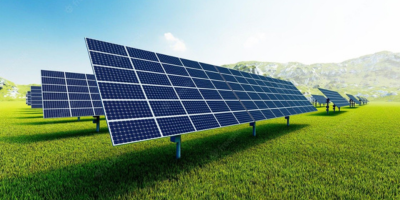As the world shifts towards cleaner and more sustainable energy sources, solar park projects are emerging as a powerful solution to meet growing energy demands while reducing carbon emissions. These large-scale solar farms are designed to capture sunlight and convert it into electricity using photovoltaic (PV) or concentrated solar power (CSP) technologies. In this article, we will explore what a solar park is, its benefits, components, and why it’s becoming a key player in the renewable energy industry.
What is a Solar Park?
A solar park, also known as a solar power plant or solar farm, is a large area of land equipped with multiple solar panels used to generate electricity on a commercial scale. Unlike residential solar installations, which serve individual households, solar parks are designed to supply energy to power grids or industrial zones. They are often built in sunny regions to maximize sunlight exposure, enabling efficient electricity generation throughout the year.
Key Components of a Solar Park
- Solar Panels: These are the heart of the system. Most parks use photovoltaic (PV) panels that convert sunlight directly into electricity.
- Inverters: They convert the DC electricity generated by the solar panels into AC electricity, which can be used in the power grid.
- Transformers and Switchgear: These components step up the voltage of the electricity and ensure safe and efficient transmission.
- Monitoring Systems: Real-time monitoring and control systems are essential for optimizing energy production and detecting faults.
- Land and Infrastructure: A flat, shadow-free area is ideal. Solar parks also require fencing, internal roads, and maintenance infrastructure.
Advantages of Solar Parks
1. Renewable and Clean Energy
The most significant advantage is the production of clean energy without emitting harmful greenhouse gases. This helps combat climate change and reduces dependency on fossil fuels.
2. Economies of Scale
Large-scale deployment reduces the cost per unit of electricity produced, making solar parks more cost-effective than smaller installations. Bulk procurement of solar panels and shared infrastructure contributes to these savings.
3. Energy Security
By generating power locally, solar parks reduce the need for importing fuel, enhance national energy security, and stabilize energy prices in the long run.
4. Job Creation
From planning and construction to operation and maintenance, solar parks create thousands of jobs in engineering, logistics, and administration.
Challenges in Solar Park Development
While solar parks have numerous benefits, there are also challenges to consider:
- Land Acquisition: Securing large areas of land can be complex, especially in densely populated regions.
- Environmental Impact: Clearing land for solar panels may disrupt local ecosystems if not properly managed.
- Intermittency: Solar power depends on sunlight, which can be inconsistent due to weather or seasonal changes. However, this issue is being mitigated with better energy storage technologies.
Global Growth and Notable Examples
Countries around the world are investing heavily in solar park infrastructure. India, for example, has launched ambitious projects like the Bhadla Solar Park in Rajasthan, one of the largest in the world. Similarly, China, the United States, and the UAE are also home to several mega solar farms that contribute significantly to their national energy grids.
Future Outlook
With technology advancements, declining solar panel costs, and supportive government policies, the future of solar parks looks promising. The integration of solar energy solutions with smart grids and battery storage systems will further enhance their efficiency and reliability. Moreover, innovations in floating solar farms and dual-use farming models (agrivoltaics) are expanding the scope and sustainability of these installations.
Conclusion
Solar parks are a cornerstone of the global shift to renewable energy. They offer an eco-friendly, cost-effective, and scalable way to meet energy demands while minimizing environmental impact. As countries continue to invest in sustainable infrastructure, solar parks will play an increasingly vital role in shaping a greener and more resilient energy future.




